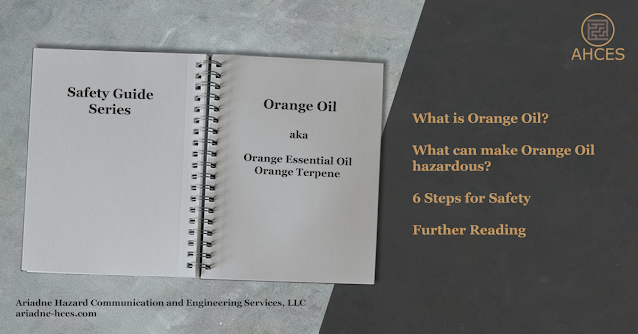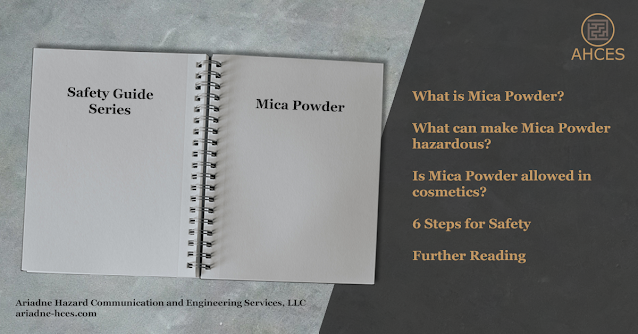Salicylic Acid Safety Guide
What is Salicylic Acid?
Salicylic Acid, also known as 2-hydroxybenzoic acid, is a benzoic acid which occurs naturally in the bark of the white willow tree and leaves of the wintergreen plant. Salicylic acid is primarily used for its antibacterial, antifungal, and painkiller properties, and is the active ingredient in many products such as acne treatment facewashes, antidandruff shampoos, and wart removers.
Salicylic Acid has a CAS Number 69-72-7.
The CAS Number is used to identify salicylic acid as an ingredient on safety data sheets (SDS) and other safety documentation. When looking for salicylic acid as an ingredient in products, look for the CAS Number within the composition table.
Notable Properties of Salicylic Acid
Pure salicylic acid is an odorless white to light tan crystalline solid. Salicylic acid is also reported to have a sweet, acrid taste. Any odor comes from natural impurities or other ingredients within a salicylic acid based product.
What Makes Salicylic Acid Hazardous?
Salicylic acid is corrosive and can cause chemical burns to the eyes. Irritation and chemical burns to the mucus membranes of the nose and throat can also occur if inhaled. Concentrated salicylic acid can also cause irritation to the skin. If ingested in sufficient quantity, salicylic acid toxicity can cause symptoms ranging from nausea and vomiting to confusion, hyperventilation, seizures, and coma.
Due to being a carbon-based substance, salicylic acid can also form combustible dusts and create a fire hazard.
Salicylic Acid Frequently Asked Questions
Does Salicylic Acid Kill Bacteria?
Salicylic acid is reported to have antibacterial properties and can kill some bacteria. Like any other antibacterial substance, bacterial resistance is possible and not all bacteria will be affected equally.
Can Salicylic Acid be Used Daily?
As a wide range of products use salicylic acid, and each
product will have separate dosing instructions, it is best to refer to the individual
product packaging. If there is any adverse reaction to a salicylic acid
product, be sure to contact a licensed medical professional for medical advice.
6 Steps for Safety
Step 1: Read the Warnings
When working with a product for the first time, always read all the safety documents first. This includes safety data sheets, which should be provided by the manufacturer or importer of the salicylic acid powder. There may also be an OSHA chemical label, FDA cosmetics label, or a Consumer Protection label on the packaging of the salicylic acid product. These documents all contain important information on the hazards of the product and instructions on how to mitigate those hazards.
Different compositions in different products may cause additional hazards to be present beyond the properties of plain salicylic acid powder. Be sure to familiarize yourself with the differences between separate oxalic acid products.
Step 2: Prepare Your Workspace
Creating a safe workspace, sometimes referred to as engineering control, is a key component of working safely with any potentially hazardous substance.
Since the primary hazard of salicylic acid powder is the fine dust, both as a corrosive irritant and as a combustible dust, ventilation is important. Fans which would blow salicylic acid powder around should be avoided. Dust collectors and air filters which draw in and capture any stray salicylic acid powder are ideal.
If the salicylic acid is in a liquid solution, it has the same corrosive and irritant hazards, though cannot form combustible dusts. Working in a space where liquid spills can be contained is important, as well as making sure the work surface cannot absorb the salicylic acid solution. Using a spill tray, which is a shallow plastic container, is ideal for working with smaller quantities as the tray retains any spilled material. For larger quantities, having a spill kit available is important.
Step 3: Gather Your PPE
For salicylic acid, you will need the following PPE.
- Respiratory Protection
- A half-facepiece respirator with filters rated for protection against fine organic dust.
- A full-facepiece respirator can serve as both respiratory protection and eye protection.
- Eye Protection
- Safety goggles which create a seal around the eyes are needed to prevent any airborne salicylic acid from reaching the eyes, either in dust or liquid droplet form.
- Open safety glasses, which do not have a sealing surface, will not work in preventing dust or liquid splashes from reaching the eyes.
- Gloves
- Basic disposable gloves will prevent salicylic acid from touching the skin on the hands and causing irritation.
- Long Sleeves
- Long sleeves will prevent salicylic acid from touching the skin on the arms and causing irritation.
- Either a long-sleeved shirt, long-sleeved coat, or disposable sleeves will work.
- Launder any contaminated closing separately to prevent cross-contamination and inform anyone laundering the clothing of the presence of salicylic acid so they can take any necessary precautions.
Step 4: Clear Your Workspace
Having a clear workspace is an important part of safety. Clutter can cause accidents and can prevent you from noticing if something has spilled.
This is also a good time to double check any engineering controls, like a dust collector, are in proper working order and no filters need to be changed out.
If you are working in a shared space, make sure anyone around you can also remain safe when you are working with salicylic acid. For those working at home, this can include family members and pets.
Step 5: Do The Work
If engineering controls and PPE are used properly, working with salicylic acid has minimal hazards.
If work cannot be completed in one sitting, be sure to properly seal any salicylic acid containers to prevent spills or accidental release when not in use.
Step 6: Clean Up
Dust generation should be avoided when cleaning up. Either a vacuum with a filter or a damp cleaning cloth can be used to pick up spilled or stray salicylic acid powder while preventing dust generation.
Be sure to dispose of any waste in accordance with local regulations, which can vary by State and county.
Further Reading
The National Library of Medicine has a PubChem article on Salicylic Acid. Salicylic Acid is also discussed in the FDA article on Alpha Hydroxy Acids.
Check out the Safety Guide Series Hub for more safety guides.
Sources Cited
National Center for Biotechnology Information (2024). PubChem Compound Summary for CID 338, Salicylic Acid. Retrieved October 4, 2023 from https://pubchem.ncbi.nlm.nih.gov/compound/Salicylic-Acid.
U.S. Food & Drug Administration (2022, November 22). Alpha Hydroxy Acids. Fda.gov. Retrieved October 4, 2023, from https://www.fda.gov/cosmetics/cosmetic-ingredients/alpha-hydroxy-acids
Original Posting Date: Oct. 4, 2023
Last Updated: Feb. 12, 2024






Comments
Post a Comment